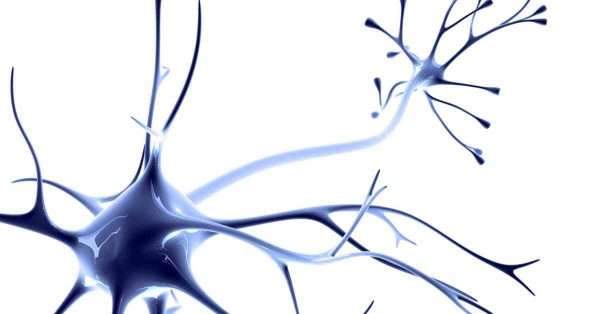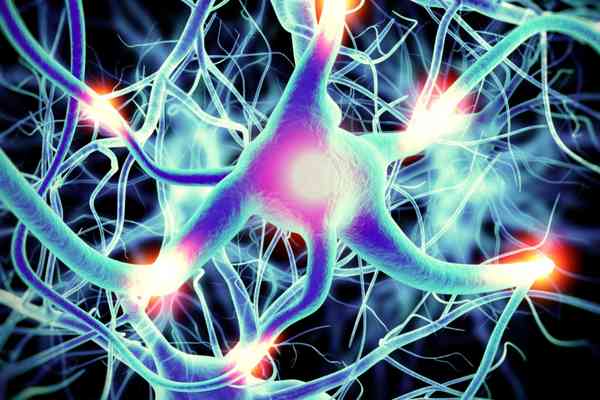Nerve pain, also known as neuropathy, or neuropathic pain, is a common and often debilitating condition affecting millions worldwide. It is a type of pain caused by damage or dysfunction of the peripheral or central nervous system nerves. This article provides an overview of what nerve pain is, how it develops, the different types of nerve pain, how it is diagnosed, current treatments (both medical and self-care), and how to talk to a doctor about options.
What is Nerve Pain?
Nerve pain is a type of pain that is caused by damage or dysfunction of the nerves in the peripheral or central nervous system. It is often described as a burning, tingling, or shooting pain that can be constant or intermittent. Various factors, including injury, infection, metabolic disorders, and certain medications, can cause nerve pain.
How Nerve Pain Develops:

Nerve pain can develop due to several different factors. The most common cause of nerve pain is damage to the nerves, which can result from injury, infection, or disease. Other factors contributing to the development of nerve pain include metabolic disorders, such as diabetes, and exposure to certain medications or toxins.
Many risk factors can increase a person’s likelihood of developing nerve pain. Some of the most common risk factors include:
- Chronic diseases: Certain chronic diseases, such as diabetes, can increase the risk of nerve damage and the development of neuropathic pain.
- Infections: Certain infections, such as shingles or HIV, can cause nerve damage and pain.
- Injury: Trauma, such as a car accident or a fall, can damage nerves and lead to nerve pain.
- Certain medications: such as chemotherapy drugs or those used to treat HIV, can cause nerve damage and lead to nerve pain.
- Alcohol: Heavy alcohol use can lead to nerve damage and neuropathic pain.
- Vitamin deficiencies: Low levels of specific vitamins, such as vitamin B12, can cause nerve damage and lead to nerve pain.
- Age: As we age, the risk of nerve damage and neuropathic pain increases.
- Genetics: Certain genetic factors can increase the risk of developing nerve pain.
It’s important to note that having one or more of these risk factors does not necessarily mean that a person will develop nerve pain, but it is essential to be aware of them and take steps to minimize the risk where possible.
Different Types of Nerve Pain:
- Peripheral neuropathy: This type of nerve pain occurs when there is damage to the nerves in the peripheral nervous system. Symptoms include: numbness, tingling, and burning sensations in the hands and feet.
- Central neuropathic pain: This type of nerve pain occurs when the nerves in the central nervous system become damaged, leading to chronic pain that is often difficult to manage.
- Postherpetic neuralgia: This type of nerve pain is caused by nerve damage that occurs after a person has shingles.
- Trigeminal neuralgia: This type of nerve pain affects the trigeminal nerve located near the face, and can lead to intense pain in the jaw, teeth, or gums.
- Occipital neuralgia: This type of nerve pain affects the occipital nerves, which are located near the base of the skull and run to the top of the neck, and can cause a severe headache.
- Complex regional pain syndrome: This chronic pain condition is thought to be caused by nerve damage and can cause intense pain, swelling, and changes in skin temperature and color.
- Phantom limb pain: This type of nerve pain occurs after an amputation and can cause pain or other sensations in the area where the limb used to be.
- Sciatica: This type of nerve pain is caused by irritation of the sciatic nerve, located near the lower back and runs down through the legs. Symptoms include: numbness, pain, or tingling in the lower back and legs.
Diagnosis:
Diagnosing nerve pain can be challenging, as no specific tests can definitively diagnose the condition. A doctor will generally perform a physical exam and take a medical history to help determine the underlying cause of the pain. Additional tests, such as nerve conduction studies or imaging tests, may also be ordered to help diagnose the condition.
Here are some of the diagnostic tools that may be used:
- Medical history: The doctor will review the patient’s symptoms, including when the pain started, where it is located, and how severe it is. They may also ask about any underlying medical conditions, family history, or recent illnesses or injuries contributing to the pain.
- Physical exam: The doctor will perform a physical exam to check for signs of nerve damage, such as weakness, numbness, or tingling. They may also check for any changes in reflexes or muscle tone.
- Imaging tests: Tests such as X-rays, (MRI), or (CT) scans can help to visualize the structure of the nerves and rule out other conditions, such as tumors or herniated discs, that could be causing the pain.
- Nerve conduction studies: These tests can help evaluate the nerves’ function and identify areas of nerve damage or dysfunction.
- Blood tests: Blood tests can help to identify underlying medical conditions, such as diabetes or vitamin deficiencies, that can cause nerve damage and contribute to nerve pain.
Current Treatments:

Several treatments are available for nerve pain, both medical and self-care. Medical treatments for nerve pain may include:
- Antidepressant medications: Certain antidepressant medications, such as tricyclic antidepressants, can effectively reduce nerve pain. They work by affecting the way the brain processes pain signals.
- Anticonvulsant medications: Some anticonvulsant medications, such as gabapentin and pregabalin, can also reduce nerve pain. They work by blocking the transmission of pain signals in the nerves.
- Other Medications: Such as Gabapentin have long been a go-to for managing chronic nerve pain conditions.
- Injection therapies: In some cases, injection therapies, such as corticosteroid injections or botulinum toxin injections, can target specific areas of nerve pain and reduce inflammation.
- Electrical stimulation therapies: These therapies use low-level electrical currents to stimulate the nerves and can help to reduce pain. Examples of electrical stimulation therapies include transcutaneous electrical nerve stimulation (TENS), spinal cord stimulation, and peripheral nerve stimulation.
- Complementary and alternative therapies: Some people find relief from nerve pain with complementary and alternative therapies, such as acupuncture, massage therapy, or mindfulness meditation. While the evidence supporting the effectiveness of these therapies is limited, they may be worth considering in combination with other treatments.
- Topical lidocaine patches, available over-the-counter or by prescription, can be applied directly to the skin over the painful area to help numb the nerves and reduce pain.
- Physical therapy: Physical therapy can help improve strength, flexibility, and range of motion and can effectively manage nerve pain. A physical therapist can design a customized exercise and stretching program to help alleviate pain and improve overall function.
- Surgery: Surgery may be necessary in severe cases to reduce or treat nerve pain.
Self-care treatments for nerve pain may include:
- Heat or cold therapy: Applying heat or cold to the affected area may help to reduce pain and inflammation.
- Exercise and physical activity: Regular exercises, such as walking or swimming, can help to reduce inflammation and improve circulation, which can help to alleviate nerve pain.
- Stress management techniques: Stress can exacerbate nerve pain, so it’s important to practice stress management techniques, such as deep breathing, meditation, or yoga.
- Healthy diet: Eating a diet rich in fruits, vegetables, and whole grains can help reduce inflammation and promote overall health.
- Avoiding alcohol and smoking: Both alcohol and smoking can worsen nerve pain, so it’s essential to avoid or limit these substances.
- Good sleep habits: Getting enough sleep is vital for overall health and can help reduce nerve pain. Establishing good sleep habits, such as going to bed and waking up at the same time every day, and creating a relaxing sleep environment is crucial.
- Acupressure and massage: Acupressure and massage can help to reduce muscle tension and promote relaxation, which can help to alleviate nerve pain.
Are there any supplements that help with nerve pain?
Some dietary supplements have been suggested to help with nerve pain. Supplements that have been suggested to help with nerve pain include:
- Alpha-lipoic acid: This antioxidant has been shown in some studies to reduce symptoms of diabetic neuropathy.
- Acetyl-L-carnitine: This amino acid has been suggested to help reduce nerve pain associated with diabetic neuropathy and chemotherapy-induced peripheral neuropathy.
- Vitamin B12 is vital for nerve health, and low levels have been associated with nerve damage and neuropathy.
- Magnesium: This mineral has been suggested to help with nerve pain.
- Omega-3 fatty acids: These healthy fats found in fish and fish oil supplements have been suggested to help reduce inflammation and improve nerve health.
In general, it’s important to remember that while supplements may be helpful in some cases, they should not be used as a complete substitute for medical treatment.
What are some of the best otc products that help with nerve pain?
Over-the-counter (OTC) pain medications can help manage mild to moderate nerve pain. However, it’s important to note that these medications may not be effective for everyone and may have side effects, so it’s important to talk to your doctor before using them. Here are some OTC products that may be helpful for nerve pain:
- Nonsteroidal anti-inflammatory drugs (NSAIDs): These drugs, including ibuprofen (Advil) and naproxen (Aleve), can help to reduce inflammation and relieve pain.
- Acetaminophen: This pain reliever, sold under the brand name Tylenol, can be effective for mild to moderate pain.
- Topical pain relievers: Over-the-counter topical products, such as creams or patches containing capsaicin (the active ingredient in chili peppers) or lidocaine, can relieve localized nerve pain.
- Herbal remedies: Some people have found relief for nerve pain with herbal remedies, such as St. John’s Wort or chamomile, although there is limited scientific evidence to support their effectiveness.
It’s important to remember that while OTC pain medications can effectively manage nerve pain, they may not be appropriate for everyone.
Conclusion:
Nerve pain is a common and often debilitating condition affecting many body parts, however there are treatments available to help manage the symptoms. Treatment often involves multi-prong approach utilizing a combination of the options discussed in this article.
Talking to a Doctor:
If you are experiencing nerve pain, you should talk to a doctor about your symptoms. Your doctor can help determine the underlying cause of the pain and recommend an appropriate treatment plan. Be sure to provide your doctor with a detailed description of your symptoms, including when the pain started, where it is located, and how severe it is. You should also provide your doctor with a list of any medications you are currently taking and any medical conditions you have. It is essential to understand the different types of nerve pain, how it develops, and the available treatments. With the correct diagnosis and treatment plan, it is possible to manage nerve pain and improve your quality of life.
Find more stories on the blog
References:
- National Institute of Neurological Disorders and Stroke (NINDS). “Peripheral Neuropathy Fact Sheet.” https://www.ninds.nih.gov/Disorders/Patient-Caregiver-Education/Fact-Sheets/Peripheral-Neuropathy-Fact-Sheet
- American Chronic Pain Association. “Neuropathic Pain.” https://www.theacpa.org/pain-types/neuropathic-pain/
- National Health Service (NHS). “Neuropathic Pain – Causes.” https://www.nhs.uk/conditions/neuropathic-pain/causes/
- American Academy of Neurology. “Evidence-based Guideline: Treatment of Painful Diabetic Neuropathy.” https://www.aan.com/Guidelines/Home/GetGuidelineContent/567
- National Institute of Diabetes and Digestive and Kidney Diseases (NIDDK). “Diabetic Neuropathy.” https://www.niddk.nih.gov/health-information/diabetes/overview/preventing-problems/nerve-damage-diabetic-neuropathies
- Pain Management Nursing. “Nurse-led Intervention for Patients with Peripheral Neuropathic Pain: A Multisite Randomized Controlled Trial.” https://www.sciencedirect.com/science/article/pii/S1524904219303316
- Cochrane Library. “Pharmacotherapy for Neuropathic Pain in Adults: A Systematic Review and Meta-Analysis.” https://www.cochranelibrary.com/cdsr/doi/10.1002/14651858.CD011078.pub3/full
These sources provide evidence-based information and guidelines for the diagnosis, treatment, and management of nerve pain. They can be helpful resources for anyone looking to learn more about this condition.




